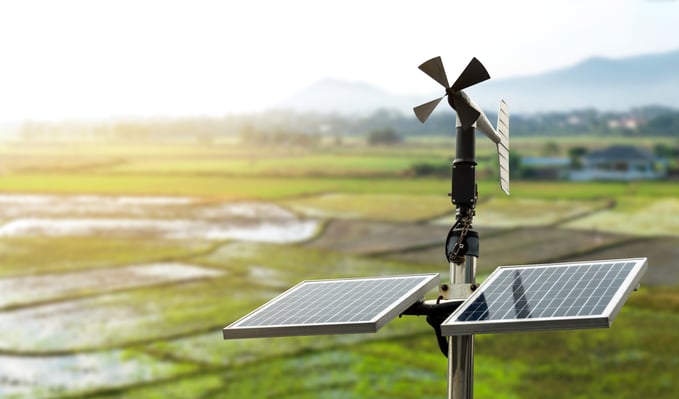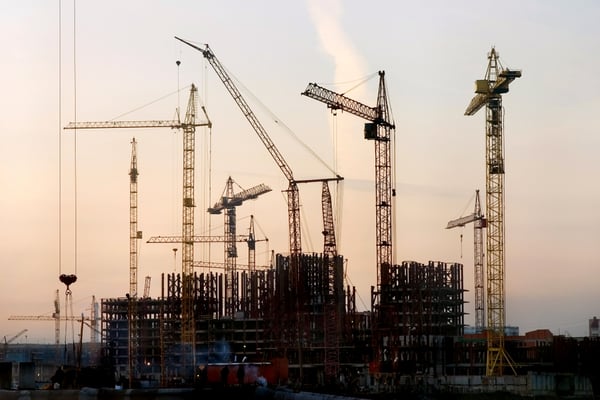Managing Weather Risks in Construction Projects

Risk management is very important in construction, since there are unexpected events even in the best-managed projects. The weather is one of the main risks in construction, and ignoring it can have severe consequences. For example, if a tower crane lifting a heavy load collapses due to a gust of wind, the lives of workers are threatened and the material damage can be severe. A major accident can also have legal consequences for developers and contractors, in addition to the human and financial losses.
Checking the weather forecast before lifting operations may seem like a simple solution. While this is better than ignoring the weather completely, forecasts have many limitations:
- Modern weather forecasts are more accurate than a few decades ago, but they are not 100% accurate. The weather is chaotic and affected by many variables that are not completely understood.
- Weather forecasts provide a general picture of what to expect. However, they cannot predict short-term events such as wind gusts and turbulence.
- Site conditions create microclimates, and these are not reflected in weather forecasts. For example, the wind speeds up when it passes between two large buildings.
The only way to track the weather reliably at a construction site is with direct measurements. Also, since project managers cannot be at construction sites 24/7, the weather instruments used should have remote connectivity.
Identify and mitigate risks in your projects with construction administration services.
Importance of Having Adequate Weather Instruments
After installing weather instruments at a project site, the next step is making sure their data is helpful. For example, measuring the wind at ground level is not useful when a large piece of equipment is being lifted at 200 feet. The wind tends to get stronger with altitude, since there are fewer obstacles slowing it down.
There are many types of handheld anemometers, but they have several limitations compared with having a small weather station at the project site. Handheld anemometers are less accurate, and someone must hold them up to measure the wind. This makes them impractical for weather monitoring at construction sites.
On the other hand, a small-scale weather station can be attached to a tower crane or another structure. This provides continuous data about the wind conditions experienced at height, without exposing anyone to take manual measurements.

In addition to being accurate, weather instruments must have two key features to be useful in construction projects:
- Since anemometers and other instruments are often mounted in hard-to-reach places, they must have remote connectivity to retrieve data.
- They must have a reliable power source to keep tracking data at all times. If a physical connection is not available, they can use a long-life battery, or a rechargeable battery with a solar panel.
Measuring wind conditions at two heights is useful, since this allows an estimation of wind speed at other elevations. This is less expensive than using a separate anemometer for every floor under construction, and more practical than having a single anemometer at moving it around at different elevations.
The direction from which the wind blows is also a risk factor. For example, shipping containers and other rectangular loads experience greater forces when the wind reaches them from the side, since the wind is acting on a larger area.
How Weather Monitoring Can Help Solve Project Disputes
Construction contracts normally include penalties for missed deadlines, unless the contractor can justify that external causes delayed the project. Weather perception is subjective when no measurements are taken, and justifying project delays due to the weather can be difficult. However, this can be solved by recording wind speed during the project.

For example, if a tower crane could not operate due to strong winds, the contractor can show wind speed records to the client. If the wind speed exceeds the operating range specified by the crane manufacturer or industry regulations, the delay can be justified. In general, it is unsafe to operate a tower crane when the average wind speed reaches 20 mph.
In fact there is no reason to wait for missed deadlines and project disputes when the weather is monitored at construction site. If activities were delayed due to unfavorable conditions, measurements can be retrieved from the weather station and send to the client in a report.
Construction managers can use historical weather records for long-term planning, and weather forecasts for short-term planning. However, only direct measurements with weather instruments can provide reliable information in real time.

Michael Tobias
Michael Tobias, the Founding Principal of NY Engineers, currently leads a team of 150+ MEP/FP engineers and has led over 4,000 projects in the US
Join 15,000+ Fellow Architects and Contractors
Get expert engineering tips straight to your inbox. Subscribe to the NY Engineers Blog below.

